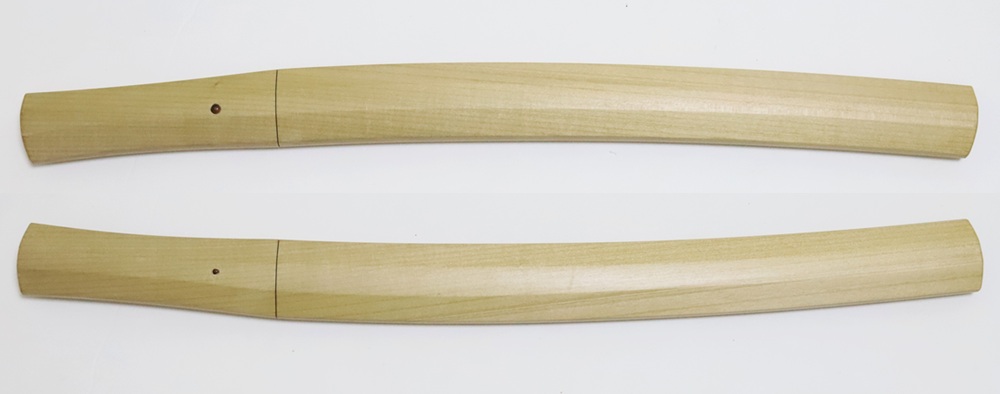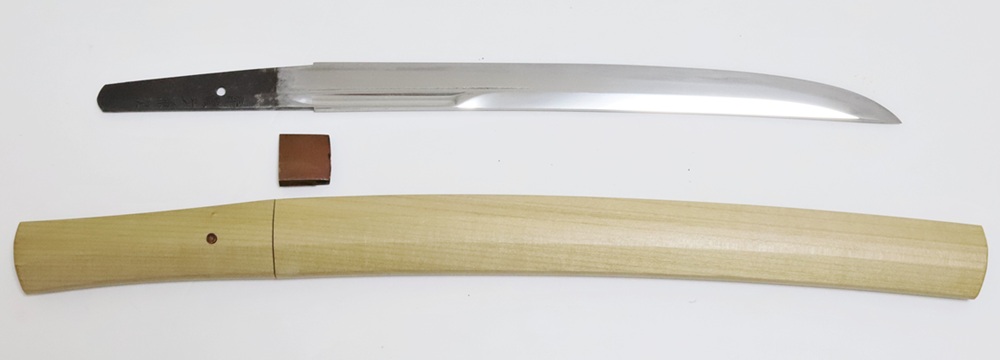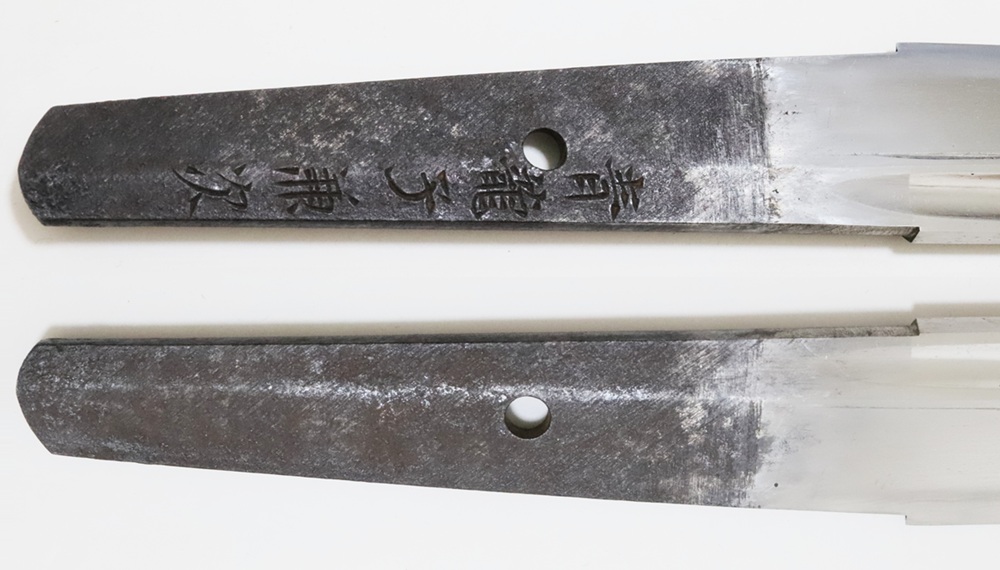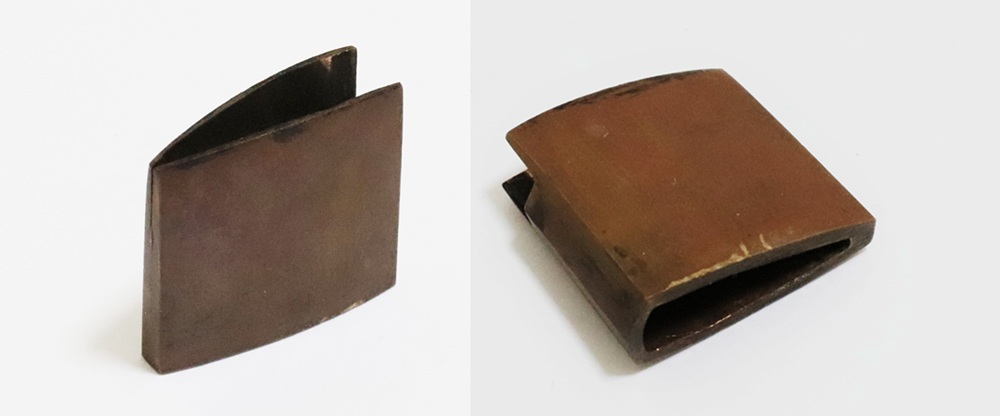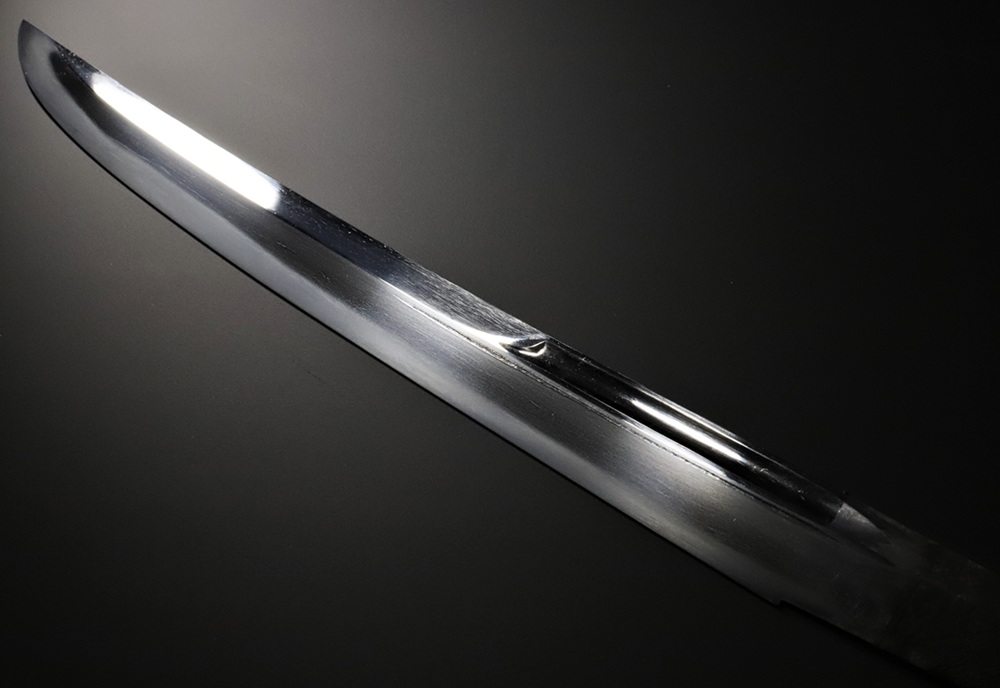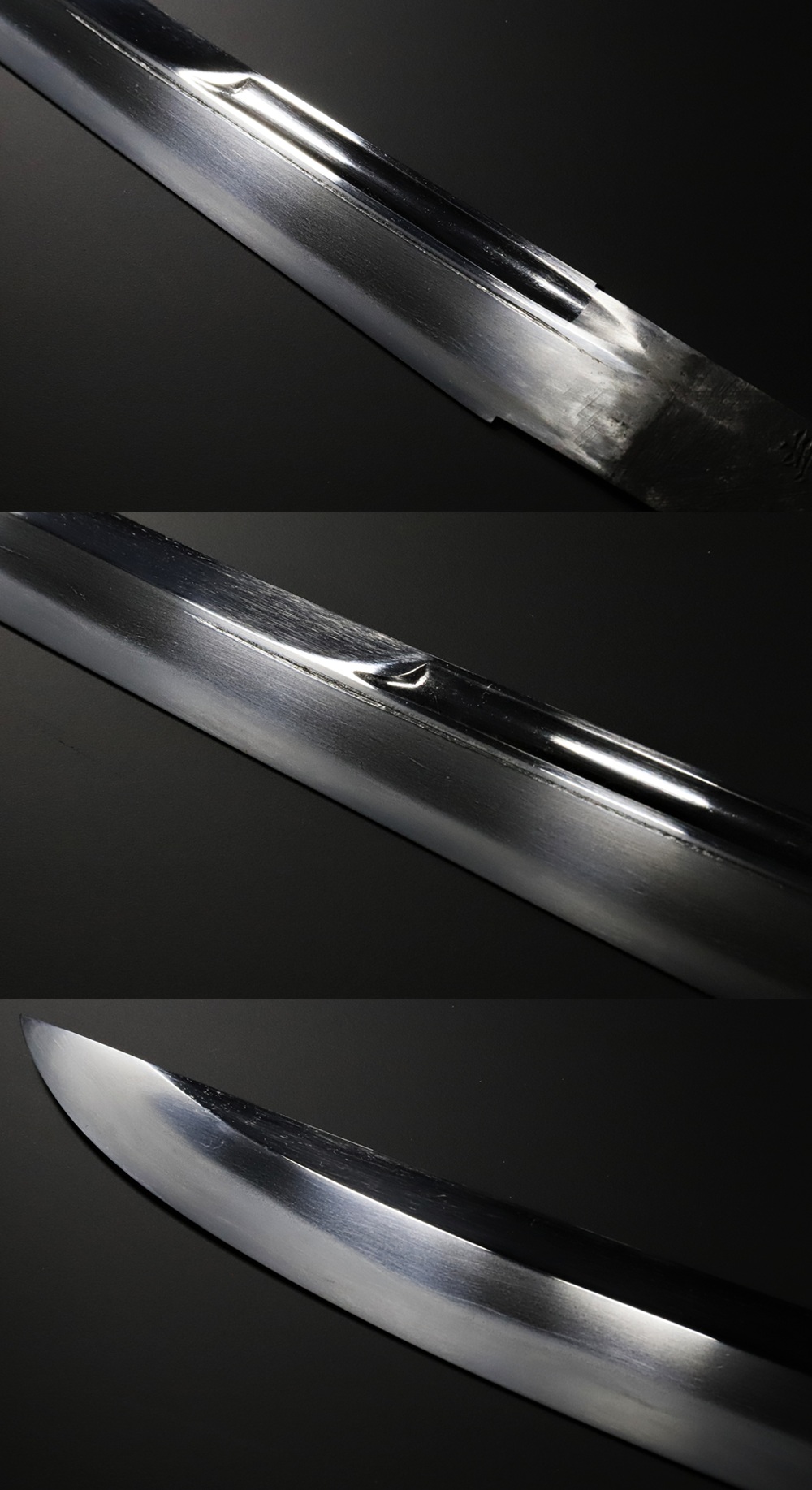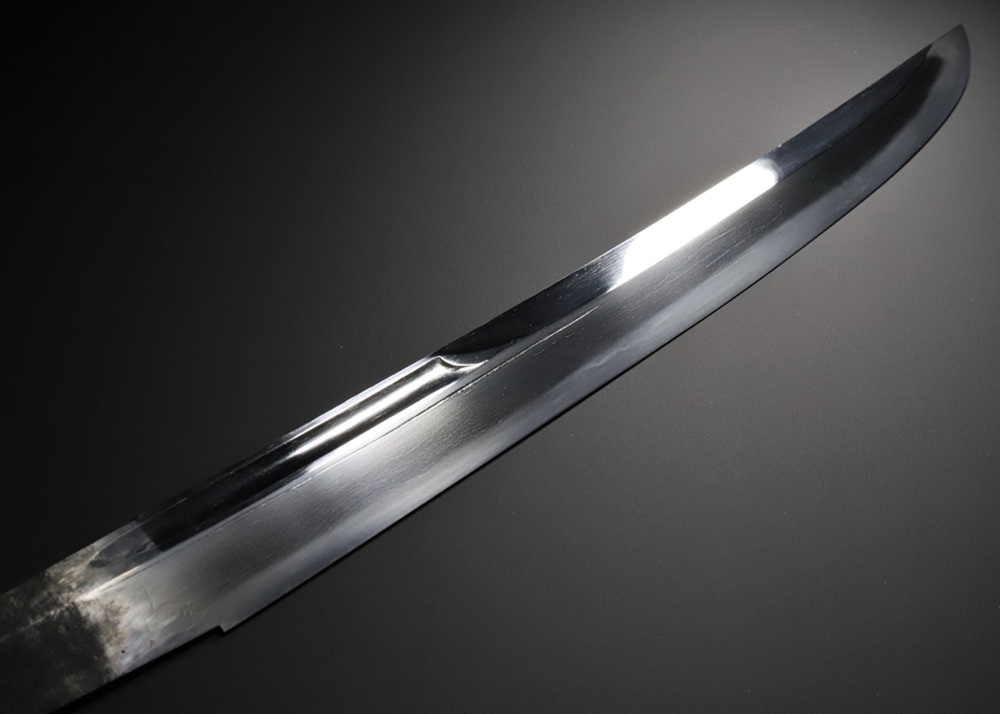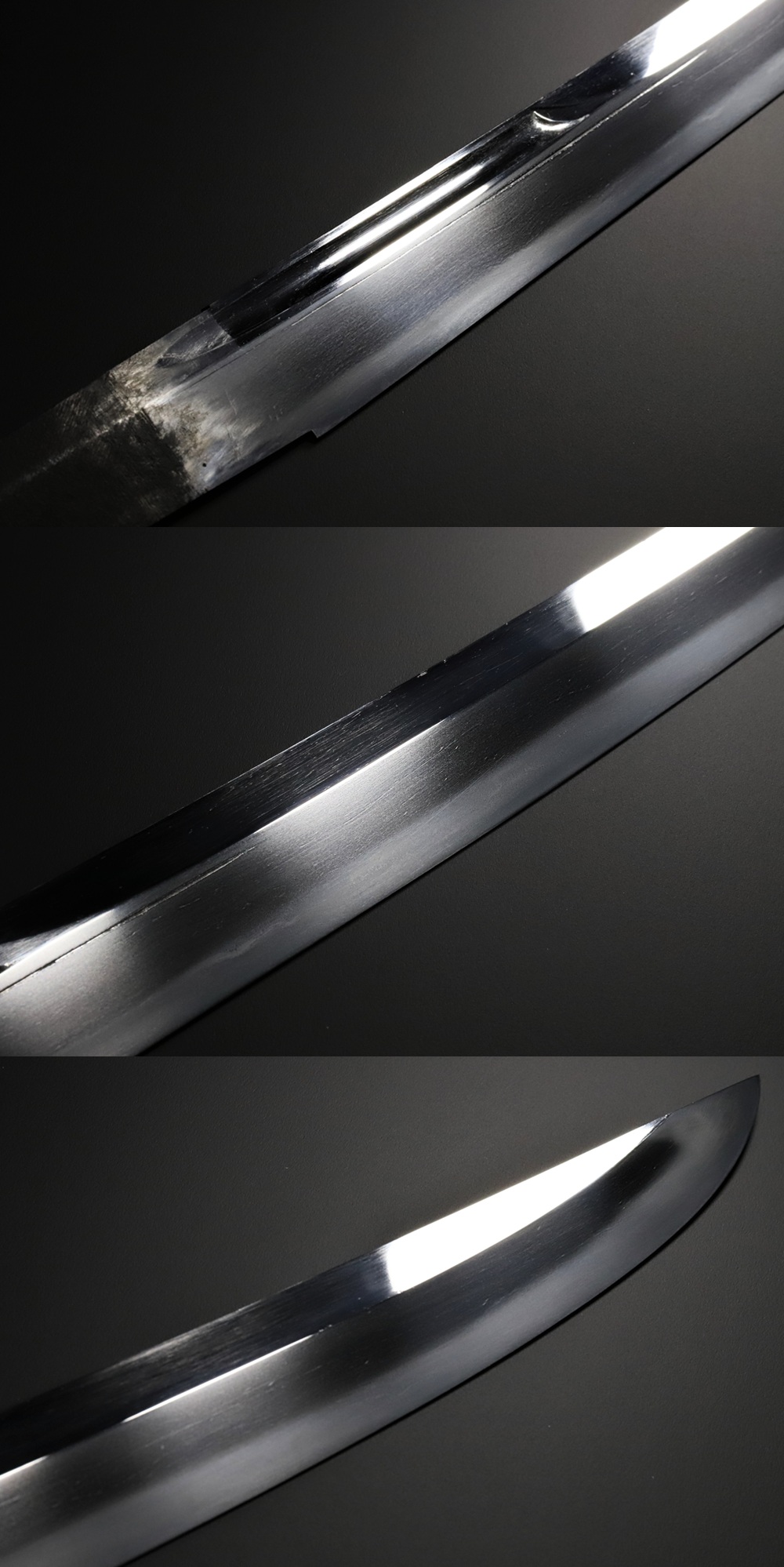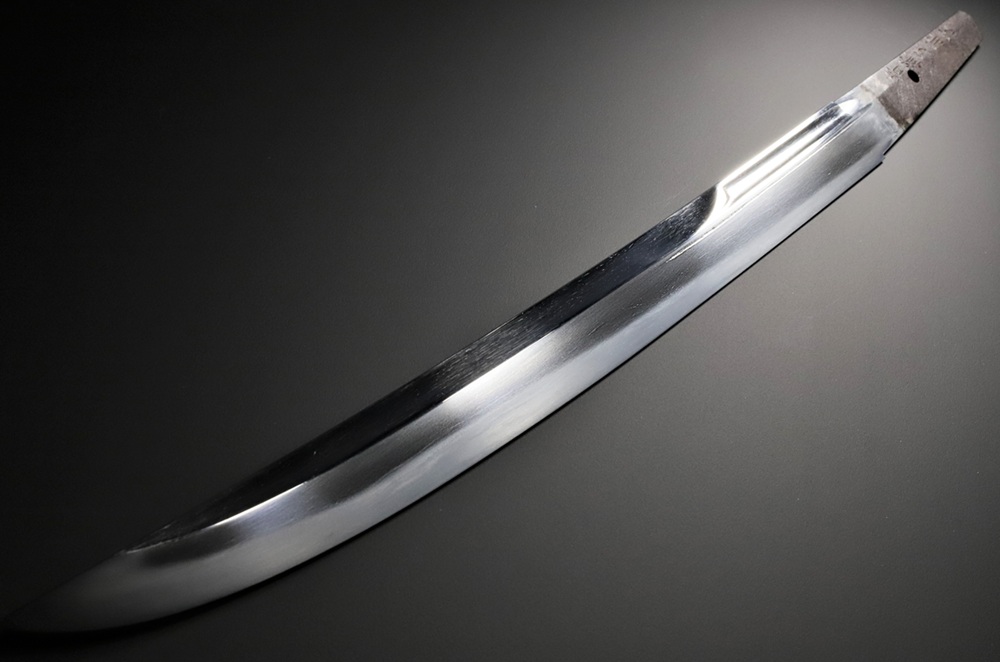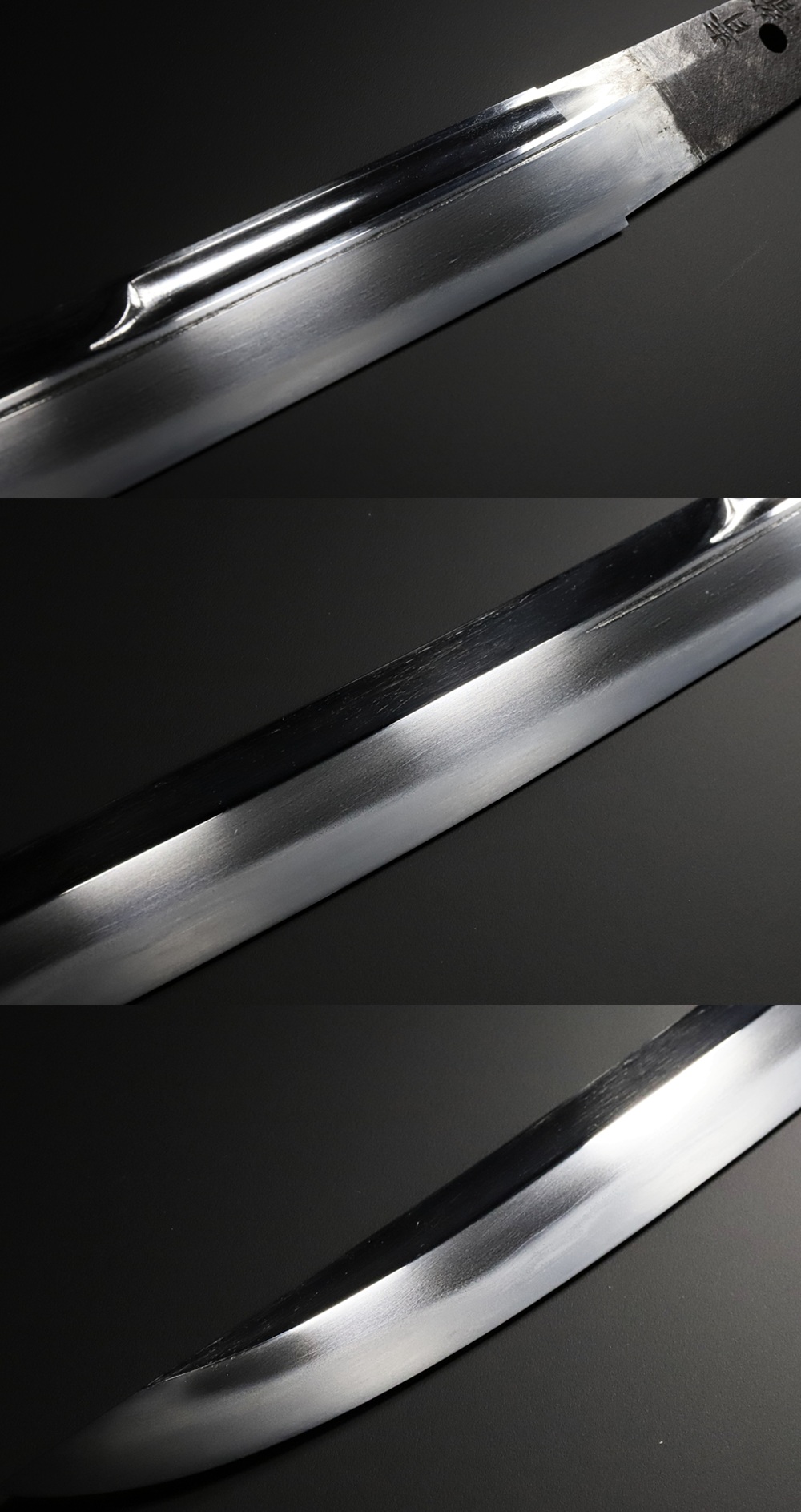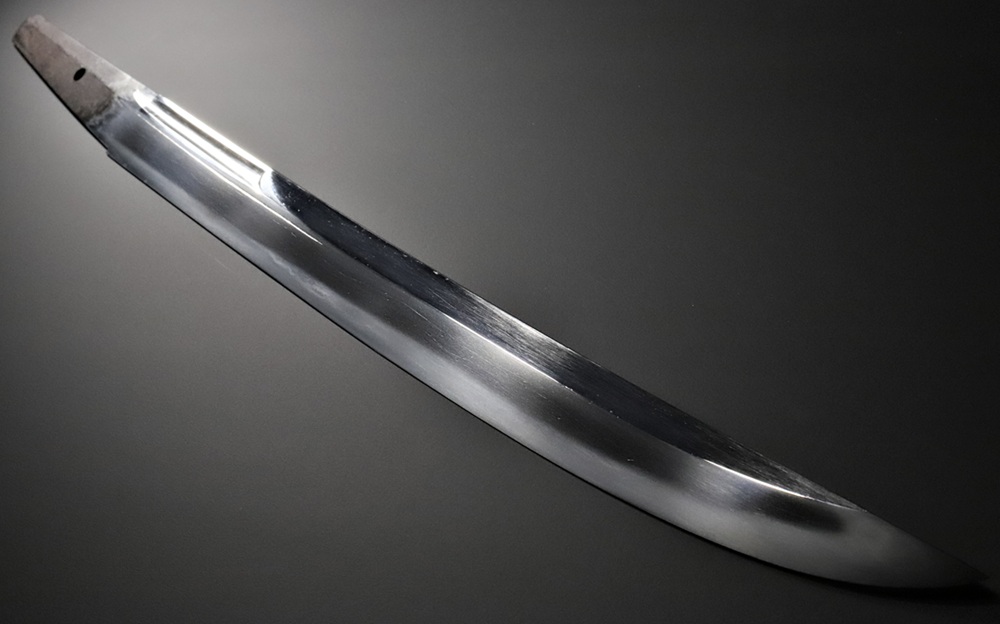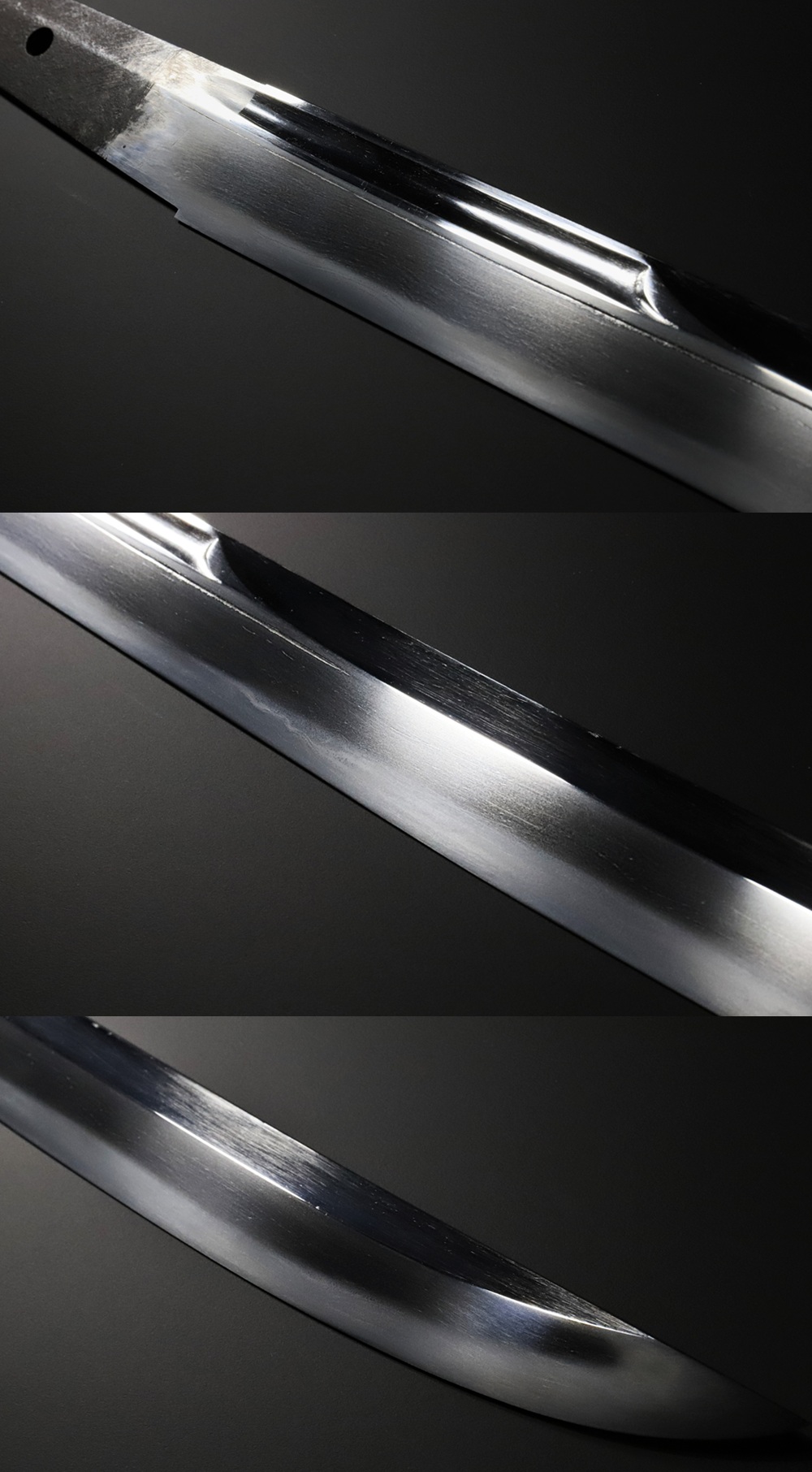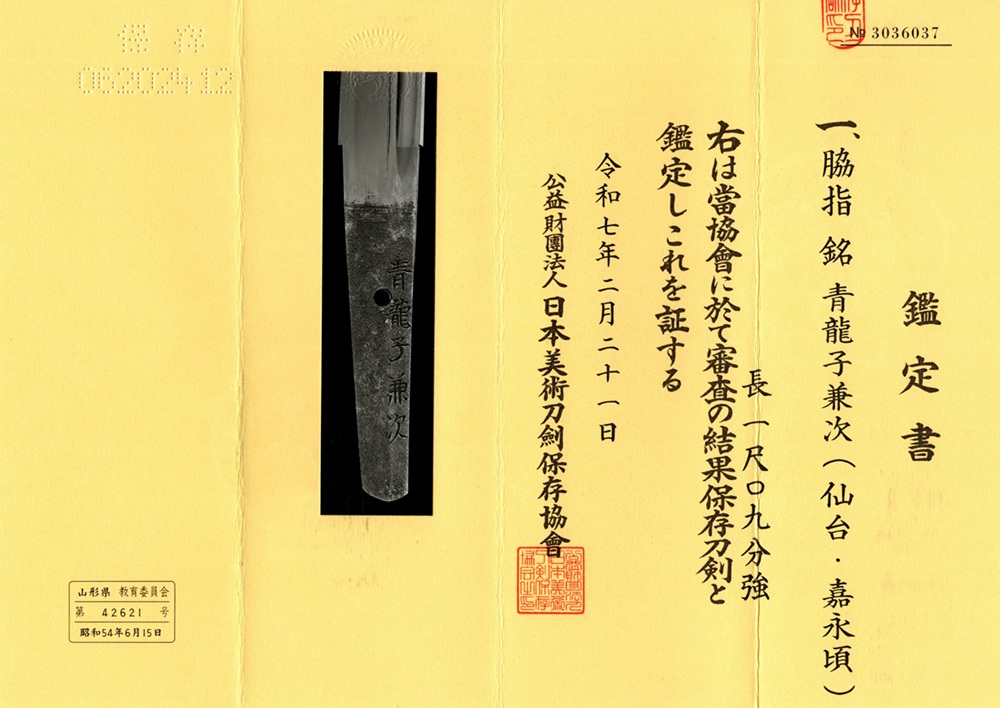
| Product No. WA-0804 青龍子兼次 | |
|---|---|
| Mei |
Seiryushi Kanetsugu Back: -- |
| Shape | Unokubizukuri Iorimune, sunnobi tanto |
| Region | Sendai, Mutsu Province |
| Era | Late Edo Period(around Kaei era 嘉永 1848-1854) |
| Length |
33.1 cm 13.0 in |
| Sori (curvature) |
0.5 cm 0.2 in |
| Motohaba |
2.9 cm 1.1 in |
| Munekasane |
0.7 cm 0.3 in |
| Status | Hozon Token |
| Certification Date | February 21, 2025 |
| Registration Authority | Yamagata Prefecture |
| Registration Date | June 15, 1979 |
| Jihada (Metal pattern) | Masame |
| Hamon (Temper line) | Broad sugu-ha with nie, sunagashi, kinsuji and niesuji |
| Engraving | Naginata-hi on each side |
| Bōshi (Point / Tip) | Sugu hakikake turn shortly |
| Nakago (Tang) | Ubu, Sujikai with kesho file and a kurijiri end |
| Mekugiana (Rivet holes) | 1 |
| Habaki | Copper Habaki |
Price |
SOLD |
| Kanetsugu is the lineage of the Kumagai clan. Each of them were craftsman employed by the Sendai domain from the first Kanetsugu around the Kan'ei era to this Seiryushi Kanetsugu [青龍子兼次] at the end of the Edo period. Seiryu-shi Kanetsugu was active during the end of the Edo period and left behind inscribed swords dating from around Genji to Meiji 2 (1869). He is also known for his collaborative swords with the 13th generation Kunikane [国包]. This sunnobi tanto features resemblie of Kunikane's [国包] work, with a full Masame-hada (straight grain). The hamon has a broad, suguha with a slight notare, well-formed nie, sunagashi, kin-suji, and nie-suji along with the Masame-hada (straight grain). It passed the Hozon Token shinsa in December 2024 (has not Tokubetsu Hozon Token shinsa been applied yet). |


